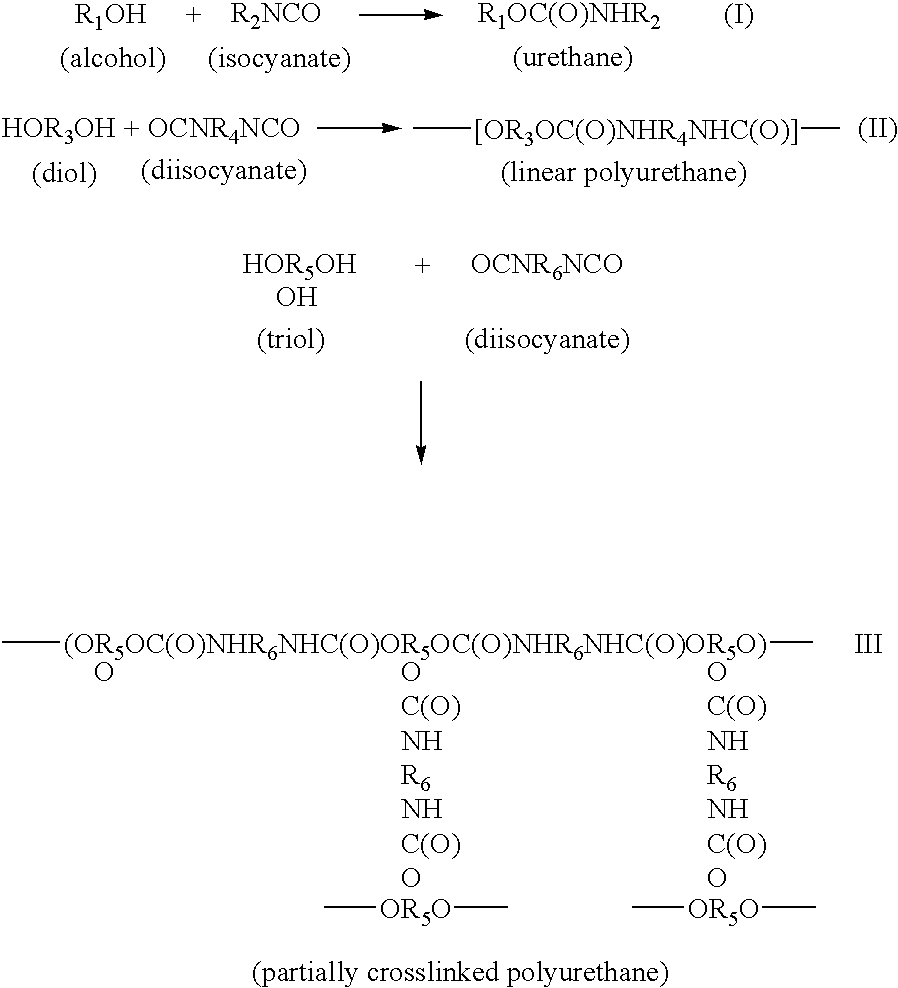Robust nontoxic antifouling elastomers
a non-toxic, anti-fouling technology, applied in the direction of biocides, synthetic resin layered products, transportation and packaging, etc., can solve the problems of increasing fuel consumption, hydrodynamic drag, complex problems that any useful anti-fouling coating must overcome, etc., to reduce the amount of polyol, reduce the modulus of elasticity, and low surface energy
- Summary
- Abstract
- Description
- Claims
- Application Information
AI Technical Summary
Benefits of technology
Problems solved by technology
Method used
Image
Examples
example 2
[0057] This is an example that did not work because both its modulus and fluorine content were too high.
4 Part A Fluorobase Z, 60% w / w solution in nBuOAc 23 g (viscosity of 200 cP at 20.degree. C.) Part B Fluorobase C, 50% w / w solution in nBuOAc 10.9 g (viscosity of 80 cP at 25.degree. C.) Trimethylol propane propoxylate, MW.sub.wt 308 0.4 g DBTDL catalyst 0.1 g
[0058] This had a NCO / OH ratio of 1.2, surface energy of 11.1 mJ / m.sup.2, an elastic modulus of 1420, and a fluorine content of 38%. Cleaning required scraping with a metal or plastic tool, and some fouling could not be removed.
example 3
[0059] This is an example that did not work simply because it's fluorine content was too high.
5 Part A Fluorobase Z, 60% w / w solution in nBuOAc 23 g viscosity of 200 cP at 20.degree. C. Part B Propylene glycol, 80 cP at 25.degree. C., MW of 425 2.5 g Trimethylol propane propoxylate, MW 308 0.4 g DBTDL catalyst 0.06 g
[0060] This had a NCO / OH ratio of 1.2, surface energy of 9.1 mJ / m.sup.2, an elastic modulus of 2.9 Mpa, and a fluorine content of 36%. Cleaning required moderate effort with a sponge or cloth, and a small amount of fouling could not be removed.
example 4
[0061] This is an example that did not work simply because it's modulus was too high.
6 Part A Polypropylene oxide, toluene diisocyanate terminated, 9.6 g MW of about 1000, viscosity of 12,500 cP at 40.degree. C., and containing 8.4 weight % isocyanate Part B Fluorobase C, 50% w / w solution in nBuOAc 10.9 g Trimethylol propane propoxylate, MW 308 0.4 g DBTDL catalyst 0.05 g
[0062] This had a NCO / OH ratio of 1.2, surface energy of 29.5 mJ / m.sup.2, an elastic modulus of 18 MPa, and a fluorine content of 9%. Cleaning required scraping with a metal or plastic tool, and all fouling could be removed.
PUM
| Property | Measurement | Unit |
|---|---|---|
| Young's modulus | aaaaa | aaaaa |
| Young's modulus | aaaaa | aaaaa |
| surface energy | aaaaa | aaaaa |
Abstract
Description
Claims
Application Information
 Login to View More
Login to View More - R&D
- Intellectual Property
- Life Sciences
- Materials
- Tech Scout
- Unparalleled Data Quality
- Higher Quality Content
- 60% Fewer Hallucinations
Browse by: Latest US Patents, China's latest patents, Technical Efficacy Thesaurus, Application Domain, Technology Topic, Popular Technical Reports.
© 2025 PatSnap. All rights reserved.Legal|Privacy policy|Modern Slavery Act Transparency Statement|Sitemap|About US| Contact US: help@patsnap.com

